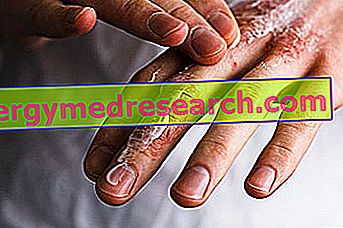Watch the video
X Watch the video on youtubeWhat are
Hot flashes are one of the most known, hated and feared symptoms of menopause. Often their appearance is perceived as a worrying sign of the passing of time, to the point of becoming synonymous with the impending loss of fertility.

Causes
Typical climacteric disorder, hot flashes are caused by the irregularity of estrogen levels and reach their peak in the months following the last menstrual cycle, only to gradually diminish after one or two years.
Even the intensity and frequency of hot flashes, similar to the date on which they occur, are not immune to a certain individual variability. Thus, some women can serenely enter menopause without experiencing any signs of the disorder, while in other cases hot flashes can become an uncomfortable life partner even for several years after the last menstruation. Intense and frequent hot flashes have been linked to a higher incidence of mood disorders in menopause, such as anxiety and depression, loss of sexual desire, sleep disorders and cognitive disorders (easy loss of concentration and / or memory) .
Symptoms
In describing the symptoms associated with hot flashes, women usually use various and colorful expressions. They are often described as a sensation of heat that rises from the chest to make the face and neck burn; it results in profuse sweating that disappears after a while, giving way to chills. During a flash, the skin temperature rises considerably, passing within a few minutes from the canons 28-30 to 34-35 degrees Celsius.
Useful care and advice
See also: Drugs for the treatment of hot flashes
Various precautions can be taken against flushing and sweating; useful, for example, a clothing consisting of multiple layers of thin and breathable clothing, as well as a temporary departure from one's diet of spicy foods, spices and hot drinks, such as tea and coffee. The same care and attention should be paid to the choice of sheets, strictly in cotton, and duvets, better if surrounded by a cool and ventilated environment. This will prevent the hot flashes from interrupting sleep at night bringing tiredness and fatigue upon waking up.
Always in the food field, fresh foods, such as vegetables, should be preferred, while it is good to stay at a safe distance from alcohol and from foods that are too fat, especially in summer or in the evening (if the hot flashes usually occur during the night rest). Obviously, these dietary precautions must be respected the more strictly the greater the severity of the disorder.
Among the useful foods in the presence of hot flushes, the universally recommended soybean stands out which, thanks to its isoflavones (substances of natural origin with a similestrogenic activity), is often proposed by wellness experts; analogous speech for the red clover and its extracts. It must be said, however, that the favorable action of isoflavones on hot flashes has been significantly reduced in recent years.
Regular exercise increases the body's thermoregulatory capacity; for this reason, women who constantly perform a certain motor activity experience less intense and frequent hot flashes than more sedentary women.
A well-trained body also improves mood, promotes weight loss and helps maintain an ideal body mass index, which has also proved to be useful in preventing the intensity and frequency of hot flashes (which are in fact more severe in obese women). On the other hand, the insulating effect of adipose tissue, which tends to oppose thermal dispersion, is well known.
A cool environment or a simple fan can be a regenerating relief in case of hot flashes.
Smokers should know that among the innumerable disadvantages of smoking is also its aggravating effect on the severity of unwanted heat waves (in addition to favoring the appearance of a menopause in early age, smoking also increases the risk of osteoporotic and cardiovascular disease).
Finally, selfcontrol is of fundamental importance to the first signs of a hot flash; a few deep and slow breaths help relaxation and help to reduce the symptoms.
Only when the hot flashes are particularly severe and frequent, after a careful clinical evaluation to examine risks and benefits, gynecologists usually recommend estrogen-based replacement therapy, possibly associated with progestins.



